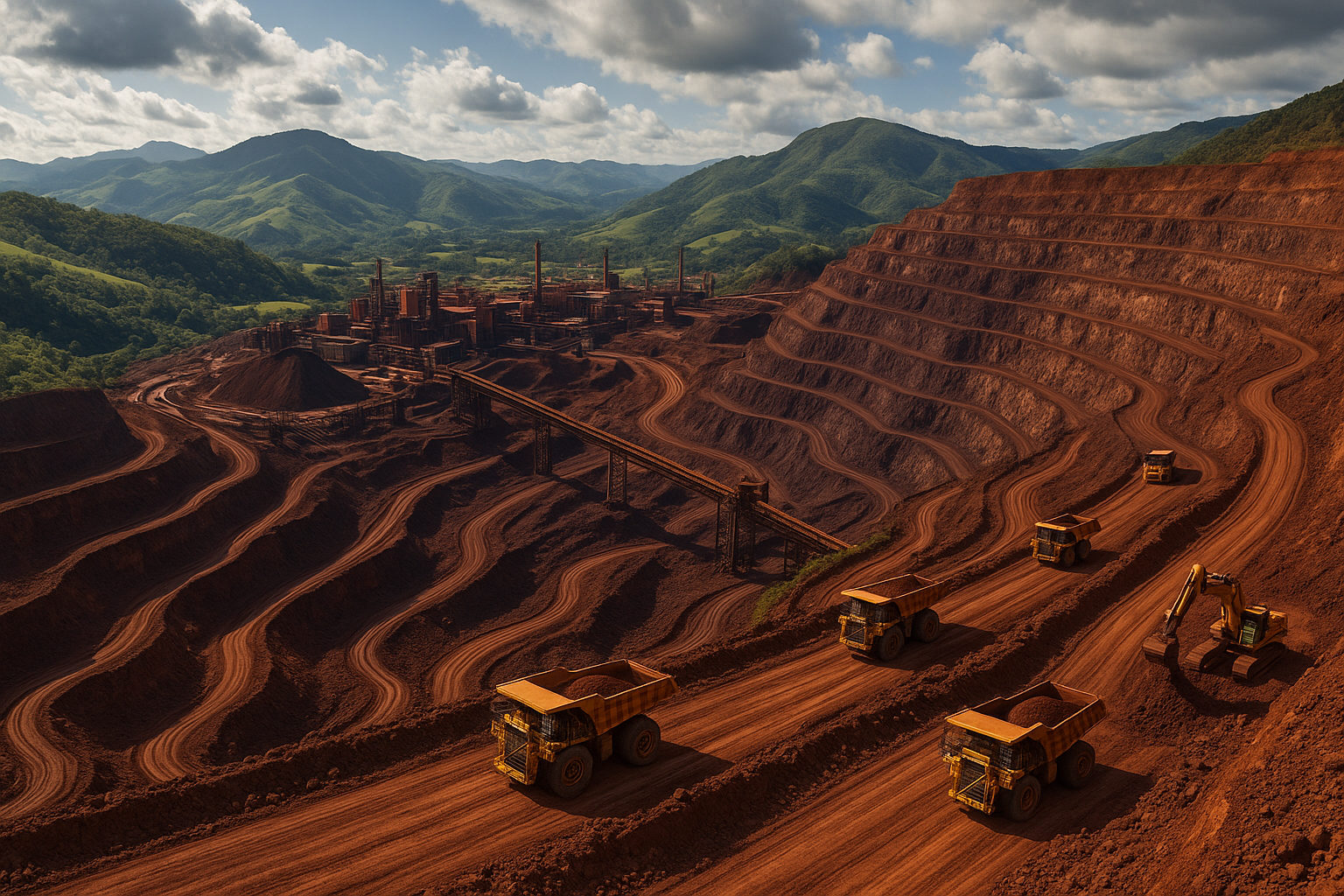
Vale S.A. stands as one of the world’s largest mining companies, an emblem of Brazil’s industrial might and a pivotal player in the global commodities market. From its early roots as a state-run iron ore operation to its current position as a diversified mining conglomerate, Vale’s story is a testament to industrial ambition, resilience, and adaptability in the face of economic, political, and environmental challenges.
Early Beginnings in Brazil
Founded in 1942 as Companhia Vale do Rio Doce (CVRD), Vale was born from Brazil’s desire to harness its rich natural resources for national development. The Brazilian government, recognizing the vast deposits of iron ore in the state of Minas Gerais, established the company to develop these resources, boost industrialization, and support economic growth. In its first decades, CVRD operated as a state-controlled entity, focusing primarily on extracting and exporting iron ore to meet the demands of postwar reconstruction, first in Europe and later in Asia.
Expansion and Internationalization
Through the second half of the 20th century, Vale invested heavily in logistics infrastructure, constructing railways and ports to connect the remote mines of Brazil’s interior to global shipping lanes. This logistical prowess became a core competitive advantage, allowing Vale to deliver large volumes of high-grade iron ore to international steelmakers efficiently and cost-effectively. By the 1970s and 1980s, the company was already a critical supplier to Japanese and European markets.
Privatization in 1997 marked a major turning point. The Brazilian government sold a controlling stake in CVRD, ushering in a new era of efficiency, innovation, and global ambition. The privatization allowed Vale to access global capital markets and pursue a series of international acquisitions. Over time, the company diversified into other minerals, including nickel, copper, coal, manganese, and fertilizers, further solidifying its role as a global mining powerhouse.
Becoming a Global Mining Giant
The new millennium brought further transformation. In 2007, the company officially rebranded as Vale S.A. (NYSE: VALE), symbolizing its evolution into a truly international corporation. The acquisition of Canadian mining firm Inco Limited, one of the world’s leading nickel producers, gave Vale an immediate global footprint and access to strategic minerals essential for emerging technologies, such as batteries and electronics.
Vale’s expansion was not limited to North America. The company established operations in Asia, Africa, and Australia, participating in joint ventures and building supply chains that positioned it at the center of the global commodities trade. Its iron ore, essential for steel production, became a critical input for the industrialization of China and other emerging economies.
Innovation and Sustainable Development
As the global conversation around sustainability and environmental impact grew, Vale responded by investing in technology, efficiency, and responsible mining practices. The company developed initiatives to reduce greenhouse gas emissions, manage water resources, and restore ecosystems affected by mining activities. It also partnered with global firms such as BHP Group (NYSE: BHP) in joint mining ventures, reflecting the complex interdependencies of the modern mining industry.
Challenges and Resilience
Vale’s history has not been without adversity. The company has faced significant operational, regulatory, and reputational challenges, including the tragic tailings dam failures in Mariana (2015) and Brumadinho (2019), which resulted in environmental damage and loss of life. These events led to heightened regulatory scrutiny and prompted Vale to overhaul its approach to safety, transparency, and risk management.
Despite these setbacks, Vale demonstrated resilience, investing in safer technologies and reinforcing its commitment to sustainable mining. The company implemented new standards for dam safety, expanded social responsibility initiatives, and worked to rebuild trust with local communities and international stakeholders.
Strategic Vision for the Future
Today, Vale remains a cornerstone of the global mining industry, balancing its legacy as a Brazilian industrial champion with its responsibilities as a global leader. Its diversified portfolio includes iron ore, nickel, copper, and other strategic minerals, many of which are essential for the green energy transition and technological innovation.
As demand for low-carbon technologies accelerates worldwide, Vale is well-positioned to supply the raw materials necessary for wind turbines, electric vehicles, and renewable energy infrastructure. The company’s ongoing investments in innovation, digitalization, and sustainability are designed to ensure long-term competitiveness and relevance in a rapidly changing world.
Vale S.A.’s journey from a state-owned enterprise in Brazil to a multinational mining powerhouse is a story of growth, adaptation, and enduring global impact—one that continues to shape the future of resources and industry around the world.
Disclaimer:
This article is for informational purposes only and does not constitute investment advice. Investors should conduct their own research or consult with a financial advisor before making investment decisions.





